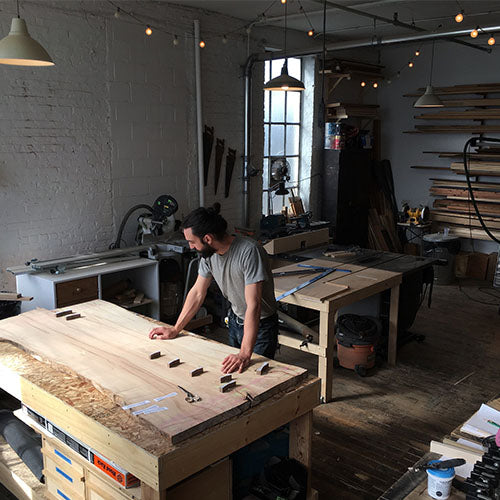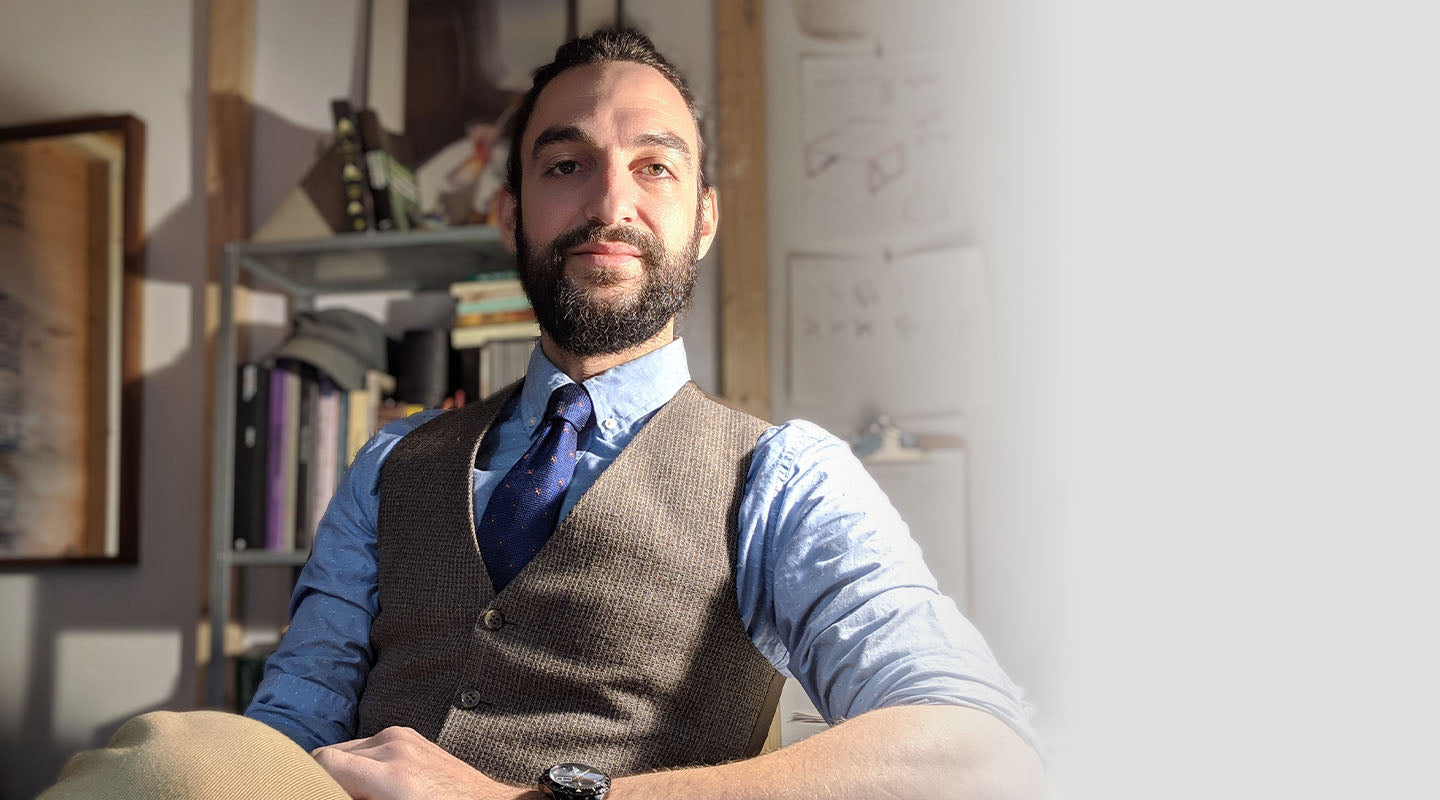
Design, Build, Live: Aaron Black
There's more to Aaron Black than a woodworker or furniture maker. From a friend's bicycle hat box to a white oak dining table, Aaron takes pride in creating simple, easy and beautiful pieces that last. Keep reading to discover the ideas that influence his work.
Image Credit: Aaron Black
Each work day for Aaron Black of Aaron Black Design, a woodworker and furniture maker out of Bushwick, Brooklyn, NY, ideally begins with a bike ride to the woodshop, often moving less ideally through traffic and noise, around potholes and city discard.



Aaron is the type who, when in need of a more efficient way to navigate the city, simply built his own bicycle. Anyone who has tried knows this is incredibly difficult. But he took his time, researched specialty tools and techniques, and developed a clear sense of what was necessary. He’s built two more bikes since then, fixed- and single-speed urban road bikes he tries to bring in at under 20 pounds. Simple, beautiful, quality objects that function, these bikes say a lot about his day job.

Once at the shop—a thoughtfully organized, unexpectedly calming space—Aaron usually turns on music, classical in the mornings, jazz later in the day, even if the power saws and sanders might soon have him with earplugs in. Until he needs it quiet.
One might think Aaron would only be concerned with the look and function of what he makes, or maybe how it feels, the texture and the finish. But he admits to being fascinated by the many different sounds created by so much of his work.
“Not the table saw,” he jokes. “But chisel taps, definitely moving a hand plane across a piece of wood, even, believe it or not, applying the finish. I won’t claim it’s music, even avant-garde, but the sounds, they tell you a lot about the wood and what’s happening.”

Over the years Aaron has worked on projects as broad and varied as the city itself. But he is particularly drawn to the needs of thoughtful, interesting people.
Sometimes, this leads him to design things much less common. Once, a friend with whom Aaron would often ride through the city, wished out loud that he could bring a men’s dress hat with him when traveling by bike. During a coffee break the next day Aaron designed a lockable wooden box that would carefully hold an inverted hat—and a bike helmet when said hat was in use!—and that attached just behind the seat post.
While Aaron’s own furniture shows a design aesthetic that leans toward Mid-Century, his work is also informed by the simplistic practicality of the Shaker tradition. He also spends plenty of time thinking small. He believes that having a place for your things—keys, books, kitchen knives, ties—is not just about organization. “There’s a satisfaction to setting something in place, where it seems it should be. And these are actions you will potentially perform every day, for years, literally thousands of times. If that’s made easy and beautiful, well, that’s not nothing.”
The artisan in the city, the broad concern for quality and aesthetic detail notwithstanding, this isn’t hipster culture, some privileged nostalgic playing with style. Aaron works too hard. More to the point, essential to his work is a genuine process and the authenticity that results. A profound influence, certainly, is Japanese woodworker George Nakashima, his idea of the “sheer joy of doing and becoming” and his belief that a tree always has something to say about what object it will become. Here again, listening where one might not expect it.
One of Aaron’s commissioned pieces, a massive, white oak dining table intended to last generations as a family heirloom, included a small brass plaque mounted beneath that said,
This says a lot about Aaron’s approach to his work.

Some best evenings, after a long day of listening to and working with wood, after sweeping the sawdust from the floor and washing it from his hair, the uniform changes. The inverse from many, for Aaron, to put on a tie signals a great release from work, a time for leisure. One can imagine him listening carefully—for the sound of silk against silk—as he knots his Aklasu Blue Floral Grenadine. Regardless, it’s an aesthetic transformation that helps lead to a mental one. This might result in a chilled gin there in the shop with friends. Or time alone on the industrial roof, watching the Manhattan skyline. Or he’ll head out, make his way to one of thousands of small bars or restaurants in the city. Or, more locally, to the 1960s-era eight bowling lanes that make up Brooklyn bar The Gutter. If at all possible, certainly, he’ll go by bike.














